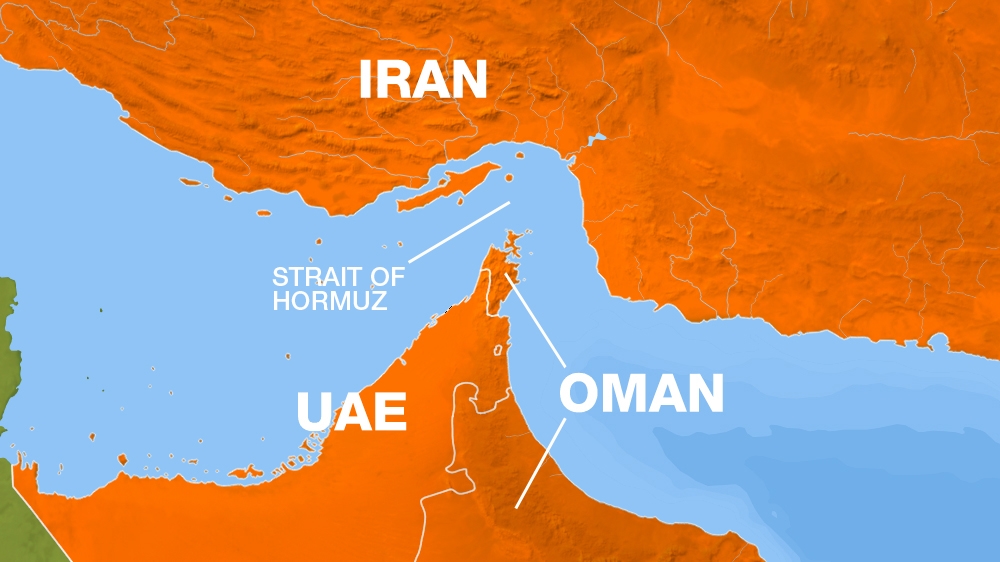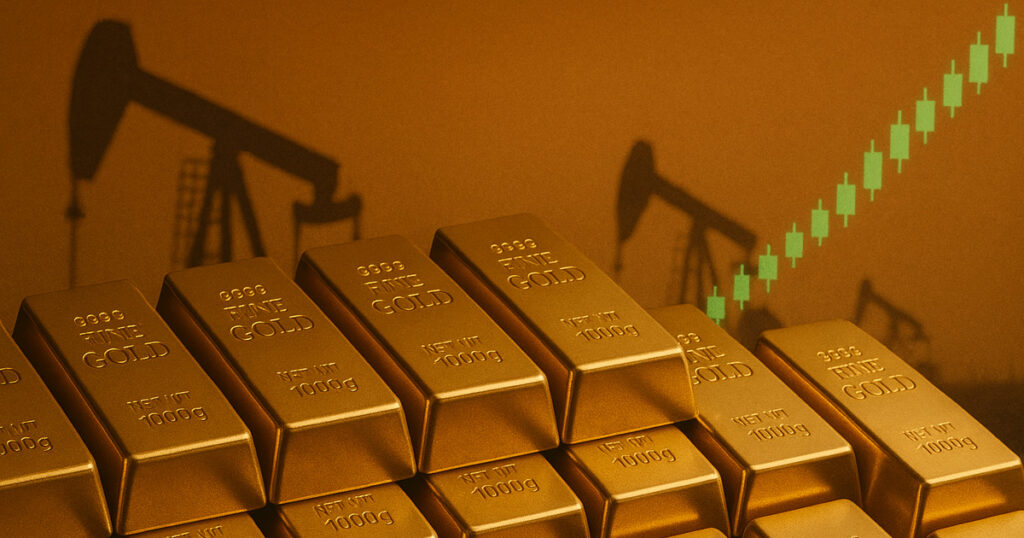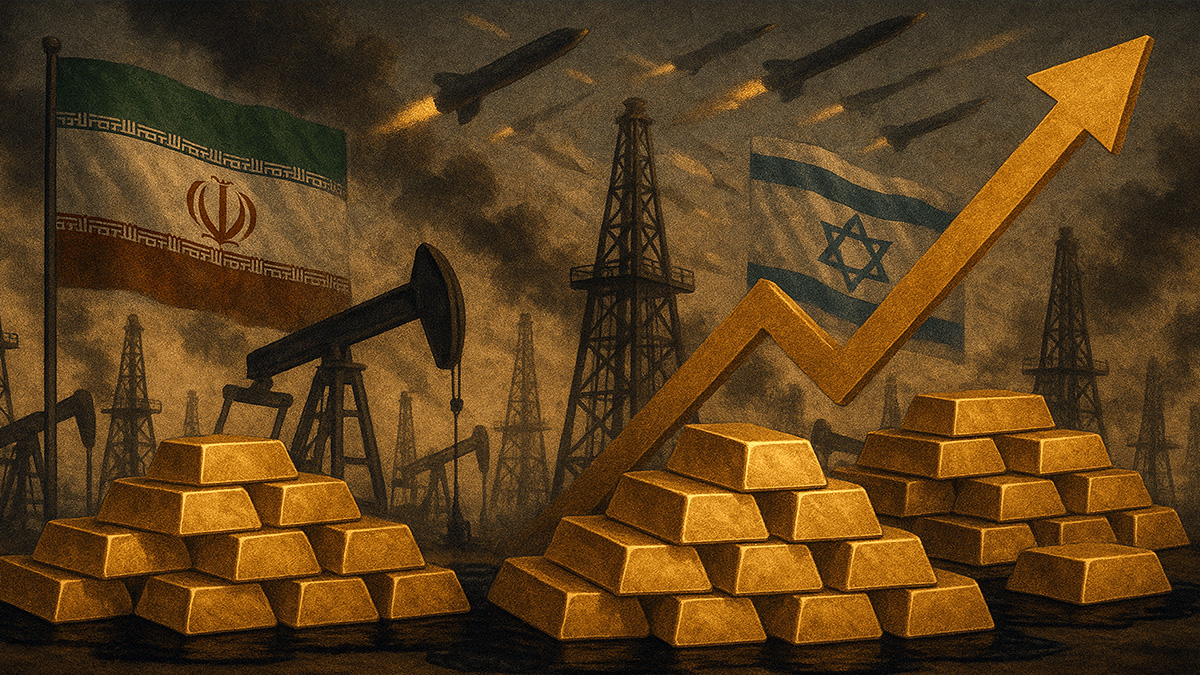The explosive conflict between Israel and Iran has many investors on edge, with concerns that it could spiral into a wider regional war and reshape the US military posture. Commodities are already surging, and a prolonged crisis could significantly alter capital flows.
In this week’s The Gold Spot, Scottsdale Bullion & Coin Founder Eric Sepanek and Precious Metals Advisor Todd Graf break down expert forecasts for oil prices, the geostrategic importance of the Strait of Hormuz, how gold reacts to a volatile energy market, and whether precious metals remain a reliable hedge amid historic conflict.
How the Israel-Iran Conflict Could Impact Oil
Oil prices had been on a downward trajectory after reaching a high of $78 per barrel at the beginning of the year. This dip was immediately reversed following Israel’s preemptive strikes on Iran’s nuclear program. Between June 12th and 13th, oil prices jumped from $66 to $71, marking a 7.5% leap within 24 hours.
Now, a barrel of crude oil is around $75. If the conflict continues, however, experts predict an explosion to $100 to $130 per barrel. This rapid doubling in prices could send shockwaves through a global economy that is extremely dependent on oil to function at every level.
“Our economy relies on oil. This would cause prices of everything to continue going up.”
Could oil reserves counter the disruption?
Although OPEC technically has sufficient oil capacity to offset any disruption from Iranian production, logistical complications make it impractical to do so. Saudi Arabia and the United Arab Emirates are the only two countries that can rapidly increase output, but they could only make up for Iran’s depletion in the short term. Plus, this spare capacity is held upstream of the Strait of Hormuz, further complicating the issue.
The Strait of Hormuz

The Israel-Iran conflict has thrust the Strait of Hormuz back into the geopolitical spotlight. This relatively small channel represents a crucial chokepoint in regional shipping. Although only a small percentage of global trade passes through this artery, it handles a disproportionate amount of the world’s oil due to its proximity to oil-rich nations.
Experts suggest the Strait of Hormuz facilitates 20% of all liquid petroleum used globally and 30% of the seaborne oil trade. In plain terms, one out of every three to five barrels of oil is shipped through this bottleneck, underscoring its geostrategic importance.
Source: EIA
Recently, Iran has threatened to close access to the strait outright, a threat made in similar conflicts in the past. With complete control over the northern coastline, ownership of key islands, and a robust military arsenal, Iran enjoys dominance over the waterway. Although a full blockade has never materialized, the potential alone is enough to rattle the heavily oil-dependent global economy.
The Impact on Americans
Washington, D.C. is 6,300 miles from Tehran, but the impact of oil disruption in the region would be felt right here at home. The price of oil impacts the cost of living, given that every single product relies on energy in some capacity, from production to shipping.
If oil prices were to reach $120 per barrel, US gas would surge from $3.14 to $5.13 per gallon. That means more expensive groceries, transportation, and goods. This would come at a time when many Americans are still reeling from years of record-high inflation in the post-COVID recovery.
We’re already seeing a lot of inflation. This would pour gas on the fire.–
The Oil-Gold Connection

While often grouped under the umbrella of commodities, gold and oil are typically seen as distinct markets influenced by different forces. However, during times of regional conflict or rising geopolitical tension in the Middle East, the two frequently rise in tandem.
This connection dates back to the 1970s, when President Nixon, after ending the gold standard, struck a deal with Saudi Arabia to sell oil exclusively in US dollars. The resulting petrodollar system linked the dollar to oil, but gold continued to serve as a trusted store of value for both central banks and investors.
A sharp spike in oil prices within the petrodollar system puts strain on the dollar. It heightens inflation concerns, prompting investors to move their wealth into gold as a safeguard against eroding purchasing power.
Oil, gold, and currencies have been interconnected for decades. We’ve had warnings that there could be a major conflict like this. The time is coming when it’s going to be a reality.–
Gold’s Safe-Haven Status Shines
Following weeks of sideways movement, gold prices shot up to $3,432 an ounce shortly after Israel and Iran traded attacks. This put the yellow metal within spitting distance of its all-time high of $3,500 an ounce reached in April 2025.
Prices have since taken a breather, but many experts have based their 2025 gold price predictions on continued geopolitical turmoil, suggesting a significant boost if this conflagration continues.
Gold stands to gain substantially from a prolonged conflict that threatens to trigger higher inflation directly. Along with silver, the yellow metal enjoys the status as a go-to safe-haven asset during periods of economic and geopolitical instability.
If you want to learn more about this conflict’s impact on markets, check out our the free reports linked below.
Don’t Miss These Free Reports
Question or Comments?
If you have any questions about today’s topics or want to see us discuss something specific in a future The Gold Spot episode, please add them here.
Comment






Questions or Comments?
"*" indicates required fields